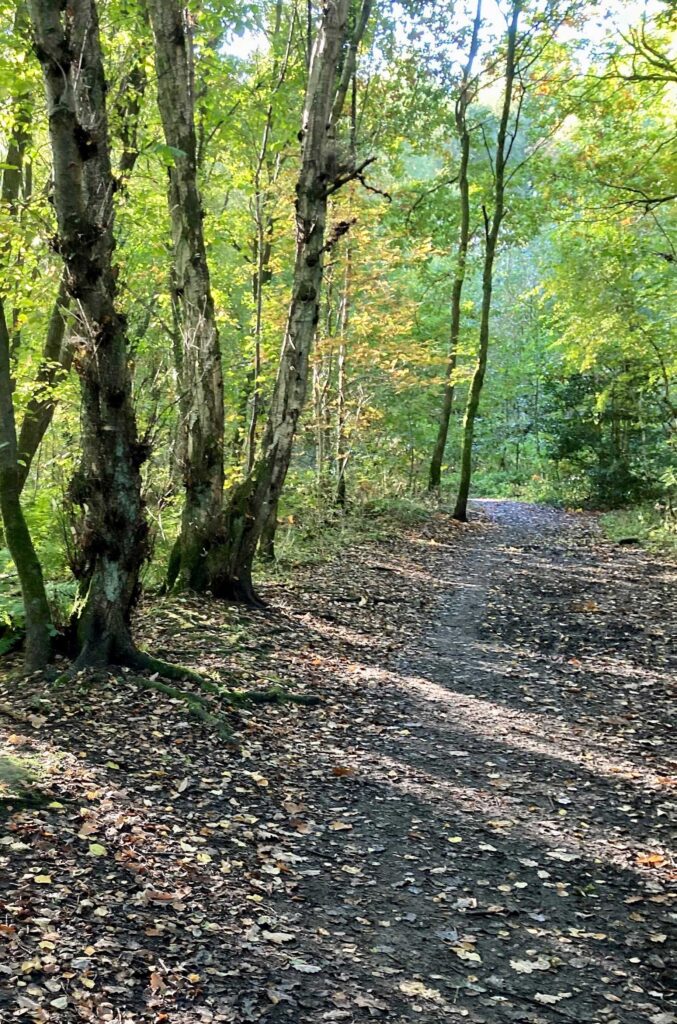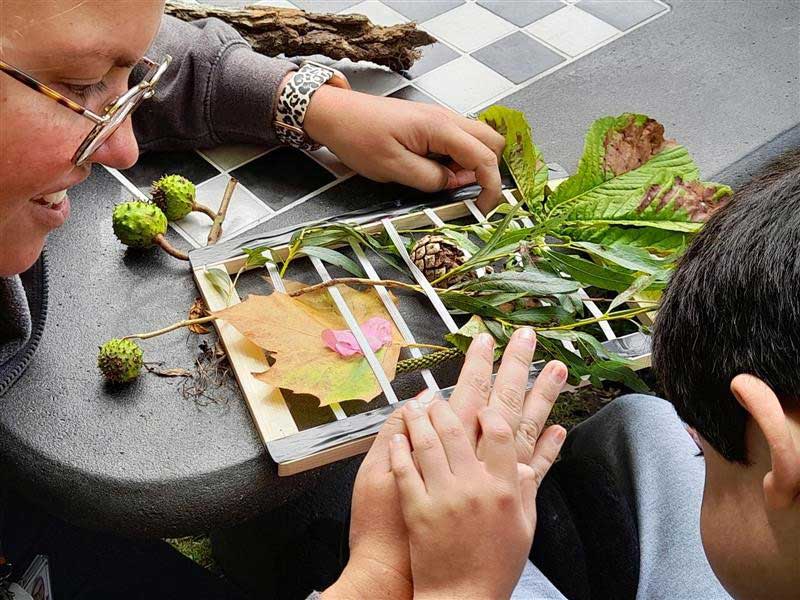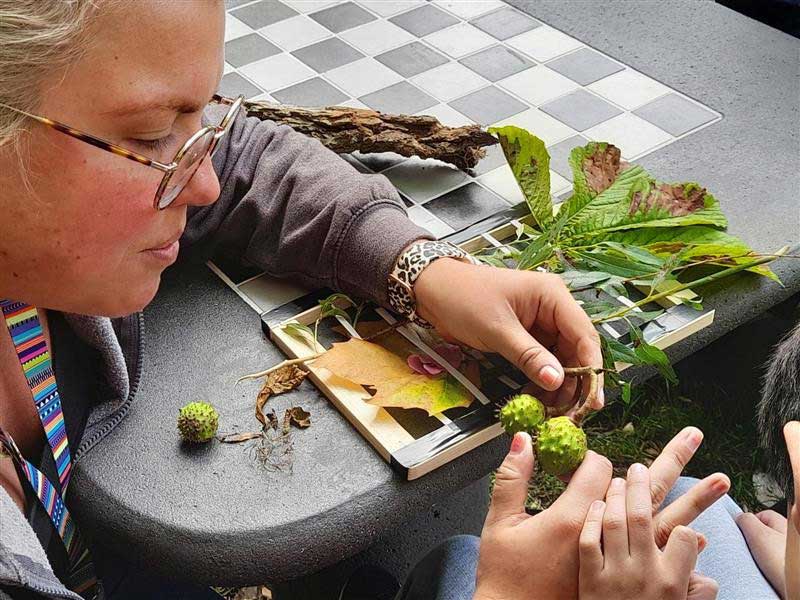Scavenger hunt

Explore your outside environment. Collect natural objects as you go.
Equipment needed:
- Lap tray/bag or twig frame.
- Planned route for scavenger hunt
Activity:
Firstly, pre-plan an accessible route . Try and include a route that will consist of various smells, safe things to touch i.e. trees/bark/leaves sounds such as leaves under foot, bumpy surfaces to feel under a wheel chair etc.
Think about how you, as the intervenor/communication partner, will communicate and bring the environment to the person who is deafblind.
Provide the person you are supporting with a suitable bag/tray and encourage them to collect items from their scavenger hunt. These items such as leaves, feathers, twigs can then become concrete objects and support memory and conversations about the scavenger hunt later.
During the scavenger hunt consider pace of learning and match this to the individual you are supporting. Allow time to explore and engage with objects and materials they find most interesting.

For example, feel a low tree branch, using hand under hand to introduce the branch, explore the leaves/twigs together, then take part of the branch (fallen- do not damage a healthy tree) as a ‘memory’.

On returning home, go through the scavenged items together. Revisiting the scavenger hunt through the items/memories you have collected. See ‘Butterfly wings’ activity for further ideas on how you can use your natural objects found on your scavenger hunt.
